Quite often, the United Kingdom of Great Britain - the most famous of the existing monarchies - is called "old England." And this makes some sense, because as a state it has been formed for a long time. And its parliament is one of the oldest in the world, in its image the legislative bodies were formed in many other countries. So, the Parliament of Great Britain: structure, formation order, features, powers. What is one of the oldest legislative bodies in the world?
Three branches of government In Great Britain
The United Kingdom is led by a queen, which is known to almost every modern person. Formally, she also manages the three main systems of the state: legislative, executive and judicial. In fact, these branches of government are represented by separate bodies and are in fact not subordinate to the monarch, whose activity is reduced to participation in ceremonial events.
The functions of the legislative body are the British bicameral Parliament, the executive - the Prime Minister and his Cabinet. The third branch is represented by several courts, dealing with various cases of law.
Similar power structure exists in many modern states, but in the UK there is one feature. De jure, the monarch may refuse to sign the law adopted by Parliament, or completely dissolve it, dismiss or appoint a prime minister, intervene in the affairs of the judicial system. This does not happen de facto. In practice, the prime minister is the country's political leader, and the remaining branches of government operate independently of him.

Parliament History
The UK legislature is one of the oldest in the world, although somewhat inferior to Icelandic. It was first formed in 1265, and after 30 years, in 1295, converted to bicameral. Prior to this, there was such an institution as the Royal Council, which seriously limited the power of the monarchy during the reign of John Bezzemlenny, who signed the famous "Magna Carta". But the main difference between the Parliament and this body was in the order of its formation - it became elected.
Over the past centuries, the structure and functions of this institution did not occur cardinal changes. After the unification of England and Scotland, a single Parliament of Great Britain was formed, and later Ireland joined them. Some reforms were carried out, mainly related to the election of participants and ways to transfer their power. It is through such a system that the procedure for the formation of the British Parliament passes so far.
By the way, it is in the Parliament that all documents and adopted acts are stored, starting from the 15th century. Here is the original of the Bill of Rights, which enshrined the restriction of royal power and led to the modern constitutional monarchy.

Structure
As already mentioned, the UK Parliament consists of two parts or chambers. In another way it can be called bicameral. The legislative bodies in many countries of the world work in the same way, including the USA, Russia, Germany, etc.
The so-called lower part is called the House of Commons, and the upper - Lords. Each of them has a chairman-speaker who is elected from among the most respected participants. The candidacy must be agreed with the leaders of all parties represented in Parliament, and approved by the monarch.According to the old tradition, the speaker retains his post until he loses his mandate or resigns on his own initiative. After that, he receives the title of Baron and a seat in the House of Lords.
The speaker does not formally belong to any of the parties, does not speak and does not participate in the voting, except in certain cases. Its functions are to ensure the interaction of the Parliament with other institutions of power, as well as address common organizational issues. In addition, he has three deputies - the vice speaker, who in his absence are engaged in conducting meetings. They are also denied the right to vote and discuss bills, as well as to belong to parties.
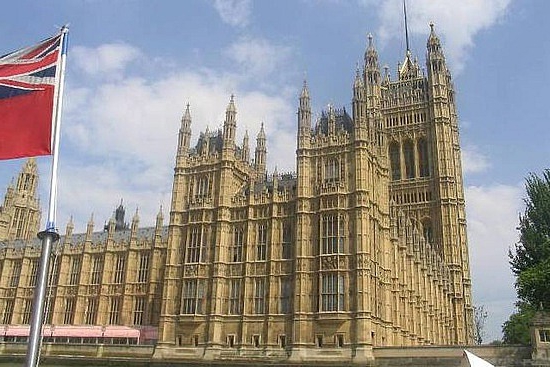
In the upper house, the lord speaker is the leader. This post was introduced about 10 years ago when reforms were carried out. As a result, the Lord Chancellor handed over part of his duties to the speaker, and he simultaneously began to combine the powers of the Minister of Justice with his post.
What is very interesting, the Parliament of Great Britain attaches great importance to the various procedures that accompany its work. Moreover, they are not fixed in writing anywhere, moreover, they vary slightly depending on the convocation and session. In general, the work of the body is regulated only by unwritten rules and centuries-old customs.
Lower Chamber
The structure of the Parliament of Great Britain assumes that in this part there is an initial discussion of the proposed bills, some amendments are made, after which a vote takes place. Members of the House of Commons, as it is called, get into it as a result of elections and take their place for 5 years. Traditionally, the leader of the winning party becomes the prime minister, although formally the Parliament has nothing to do with the formation of the government. From among the people elected to the House of Commons, a Cabinet is being formed.
Members of Parliament, belonging to the second largest party, become the official opposition and form a shadow government. Its functions are to control the implementation of decisions and the work of the main Cabinet.
Also, the lower house of the Parliament can be divided into various committees and entities designed to deal with issues in various industries. They can be special, general or combined. There is also a committee of the entire house - a mode of operation when all members participate in the consideration of bills, usually of a financial nature. After approval, the bill moves to the top at the bottom of the Parliament. It functions on completely different principles.
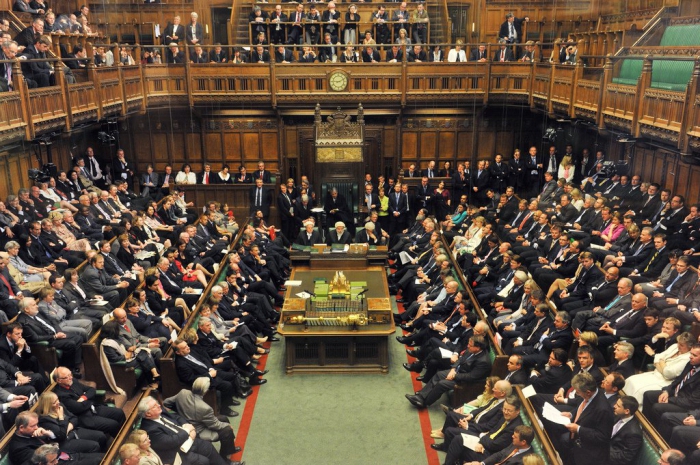
Upper chamber
It is interesting that at the present stage this part has much less authority than the elected members of Parliament. Almost all recent reforms related to its activities were aimed at limiting the power of this body and increasing its legitimacy.
The fact is that the upper house of Parliament is not a directly elected body. Here are the so-called Lords spiritual and secular (or peers). The structure includes the highest ranks of the clergy (there are 24 of them), as well as people who have received the right to participate in the legislative process by inheritance or for life. Thus, the formation of the secular part of the chamber takes place according to a rather complicated system, including the voting of all participants, as well as members of parties represented in the Parliament. At the same time, there is no numerical limitation, now 763 people are peers. Moreover, the transfer of this privilege from father to son, which used to be extremely widespread, is in fact a thing of the past - now this right is granted for life and cannot be inherited.
As regards powers, the House of Lords has far fewer powers than the Communities. As a result of several recent reforms, the veto has been replaced by the ability to defer consideration of certain bills. However, some of the bills cannot be delayed for long periods.In addition, peers formally do not have the ability to oppose the policies of the current Cabinet and make significant amendments to financial bills. However, sometimes the House of Commons delegates this right to them.
Interconnection of power branches
Initially, the British Prime Minister, as well as the Cabinet he created, were accountable to Parliament. De facto, this is not happening now because of the majority election system - according to it, the ruling party has the majority of votes in the House of Commons. On the whole, the legislative branch controls the government rather weakly. Nevertheless, the history of the 20th century knows three cases in which the House of Commons expressed its distrust of the current government, which was represented by the Prime Minister of Great Britain.
However, the legislative and executive branches are still connected. According to tradition, the Prime Minister, and then his Cabinet is gathered precisely from representatives of the lower house of Parliament. However, this is absolutely not a prerequisite, which nevertheless has been observed for a very long time.
In general, the branches of power in the UK are more likely divided than interconnected, which is what modern international law requires. Perhaps this is precisely what constitutes a considerable part of the stability and sustainability of the United Kingdom as a state.
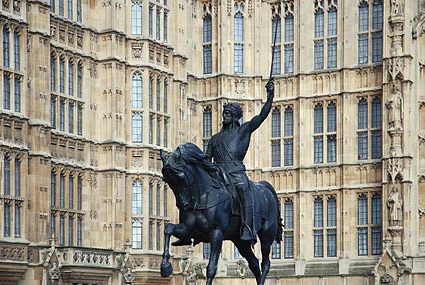
Legislative function
The powers of the British Parliament primarily relate to lawmaking. As a rule, during a regular session, meeting participants consider bills proposed by their colleagues or ministers. These bills can concern various aspects of life, which is why the already mentioned formations, commissions and committees are needed. But how is the whole process organized?
Lawmaking is the main function that the entire structure of the Parliament of Great Britain performs. This process begins with a proposal for consideration of the bill, as a rule, the royal ministers do it, but any member of both the lower and upper houses has the right to do so.
Then there are several stages of discussion, during which it may be necessary to adjust and supplement the document. In the process, the bill may be rejected, but if this does not happen, it is sent to the committee. He parses the bill article by article and proposes the next amendments. After approval in the third reading, the bill is sent to the House of Lords, where it can also be adjusted. If they are not, then the bill is submitted to the monarch for approval, but if one part of the Parliament does not agree with the amendments to the other, then there can be no talk of adoption. In some cases, the House of Commons may approve a bill without the approval of the Lords. But this is rather an exception to the rule.
The final step is approval or rejection by the sovereign. In theory, the monarch can veto a particular bill, but in practice this has not happened for a long time. The last case was in 1708. Lawmaking, therefore, is a complex process that requires consideration and approval by all three parts of Parliament. But his functions do not end there.
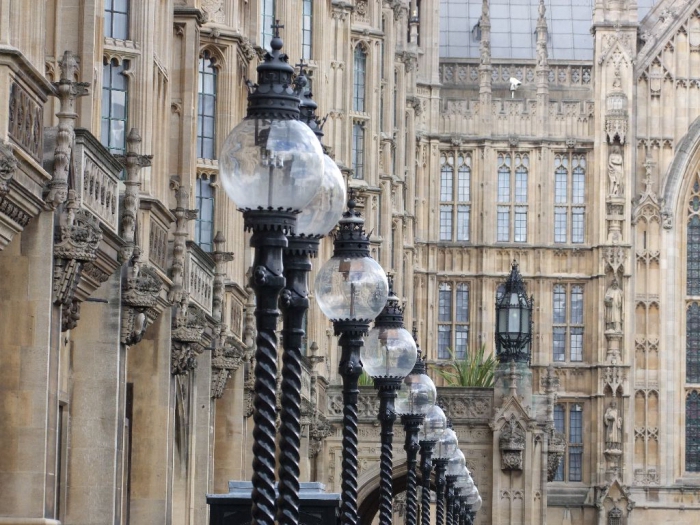
Judicial Powers
The British Parliament has another rather interesting feature. In some cases, he performs judicial functions that have come to him since the time of the ancient custom to file petitions for the correction of injustice. This primarily concerns the House of Lords. For example, until 1948 it was the Parliament that considered cases of high treason by peers. After 2005, this function was removed from the House of Lords. Nevertheless, the entire Parliament may initiate another judicial procedure - to initiate the impeachment procedure. Despite the fact that the last attempt was made several centuries ago, some hope to resume this tradition.
Formation order
Parliamentary elections are possible only when it comes to the House of Commons. Moreover, citizens who do not belong to any parties can be elected. But there are limitations.For example, a person under the age of 21, a foreigner, a citizen serving a sentence for treason, a member of the House of Lords, civil servants and the military, persons suffering from mental illness, and some other categories cannot be elected to the British Parliament.
Elections can be either general or intermediate, associated with the liberation of one of the seats. The number of deputies is determined by the number of constituencies, in 2010 there were 659. majority system the relative majority, that is, the candidate wins, having gained the maximum number of votes in comparison with competitors.
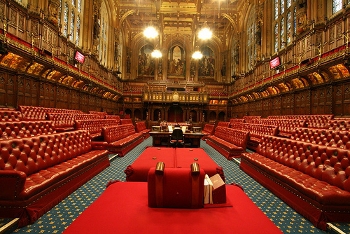
The powers of the Parliament of Great Britain last 5 years after the election or until dissolution, which is extremely rare. However, sometimes the chamber can make such a decision on its own or vice versa - to extend the term of its work, which also happens infrequently. In general, the formation of the Parliament for many years passed without serious problems.
Location
For many centuries, the British Parliament has been located in the same building - the Palace of Westminster, located on the north bank of the Thames. It was originally a royal residence, but in 1530 the monarch moved it to Whitehall, so that the legislators received the entire building for their use. The oldest parts of it were built in the XI century, but a lot has not survived due to the fire of 1834. So the building was generally built and reconstructed in the 19th century. His calling card, as well as the symbol of London, is the Big Ben clock tower, which tourists certainly take pictures of.
Inside the Palace of Westminster as a tourist is quite difficult to get. During the work of the Parliament, the number of visitors is strictly limited, not even all citizens can come without prior approval. The exception is the summer vacation period, when you can get to the palace with an organized group.
Traditions
Despite the fact that structures similar to the English legislature exist in most modern states, the British is also interesting for its ceremonies and etiquette.
For example, a general prayer is held before each meeting of the lower house. Participants stand turned to the wall, they cannot kneel, as tradition originates in the times when swords were worn in Parliament. In the days when one of the members dies, an additional prayer is also held.
Another feature is the prohibition of wearing medals and other favors of the monarch during meetings. In addition, in the process of speaking and discussing, you can express your thoughts only extremely correctly, using special expressions. Otherwise, the speaker may ask the speaker to leave the room.
In the process of adopting the new law, bill exchanges between the chambers take place. It uses phrases in Norman French. Another interesting fact is that the Lord Chancellor (now the speaker) of the upper house sits on a bag of wool. This tradition dates back to the time when England was the main supplier of this product to Europe. Now the bag is stuffed with wool produced not only on the islands, but also in other countries of the Commonwealth - this symbolizes their unity.
The United Kingdom is a remarkably conservative country. Traditions and signs reign here, but at the same time the country manages to keep up to date and remain an island of relative calm and stability in world chaos.
